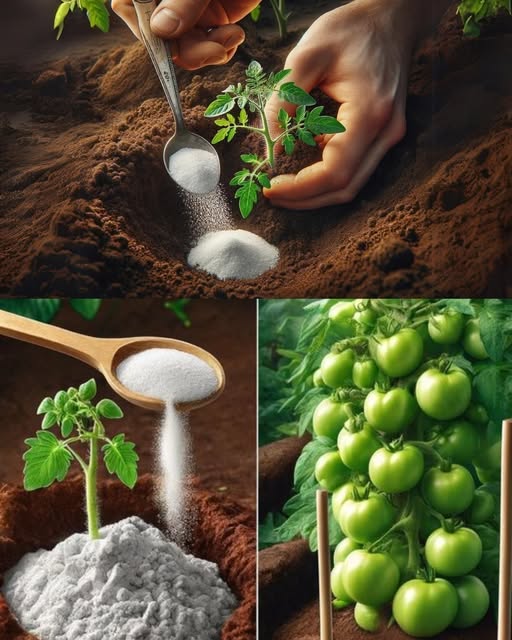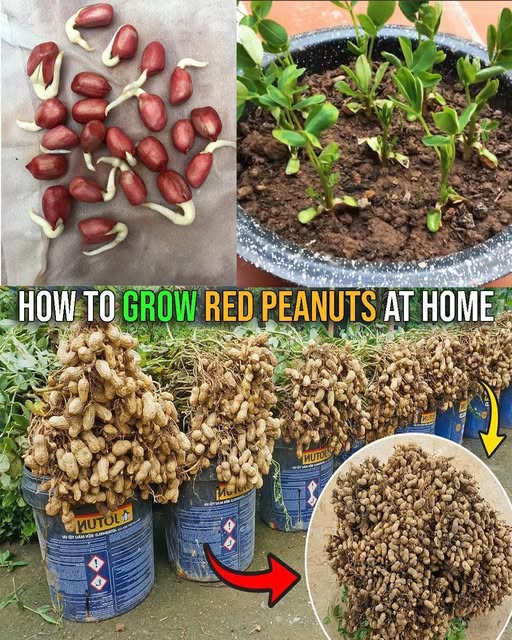Tomatoes are one of the most popular and rewarding crops to grow, whether in a garden or on a balcony. The sweet, juicy fruits of a well-cared-for tomato plant can transform any meal, but achieving such a bounty requires more than just sunlight and water. For tomatoes to thrive, they need optimal soil conditions and the right nutrients to grow healthy and strong.
Whether you’re a novice gardener or an experienced horticulturist, understanding the importance of the right fertilizer can make all the difference in your tomato harvest. In this article, we will explore the 7 best fertilizers for tomatoes and how they can help you grow the best tomatoes ever.
1. Compost: The Natural Powerhouse
When it comes to fertilizing tomatoes, compost is often considered the most organic and natural option. It enriches the soil, improves drainage, and boosts the overall health of your tomato plants. Rich in essential nutrients like nitrogen, phosphorus, and potassium, compost is a balanced fertilizer that provides slow-release nourishment over time.
Benefits of Compost:
- Improves soil structure: Compost adds organic matter that improves soil aeration, making it easier for roots to spread and absorb nutrients.
- Increases microbial activity: Beneficial microbes in compost help break down organic matter in the soil, releasing nutrients for plant uptake.
- Sustained feeding: Unlike synthetic fertilizers that give quick results, compost provides a slow, steady release of nutrients, promoting healthy, long-lasting growth.
How to Use:
- Add compost to your soil before planting, working it in thoroughly.
- For ongoing feeding, top-dress your tomato plants with compost during the growing season, or use it to mulch around the base of the plants.
2. Fish Emulsion: A Nutrient-Rich Liquid Fertilizer
Fish emulsion is a liquid fertilizer made from fish by-products like bones, scales, and tissues. It’s rich in nitrogen, phosphorus, and trace minerals, making it an excellent choice for tomatoes, especially in the early stages of growth when plants need a nitrogen boost.
Benefits of Fish Emulsion:
- Promotes lush, green growth: The high nitrogen content encourages robust leaf and stem development, which is essential for strong plants.
- Fast absorption: As a liquid, fish emulsion is quickly absorbed by the roots, offering fast results.
- Improves soil health: Fish emulsion also enhances the microbial ecosystem in the soil, supporting long-term plant health.
How to Use:
- Dilute fish emulsion with water (usually 1-2 tablespoons per gallon of water) and apply directly to the soil around the base of your tomato plants.
- Apply every 2-4 weeks during the growing season, but avoid over-fertilizing, as too much nitrogen can result in excessive leaf growth with few tomatoes.
3. Bone Meal: A Phosphorus Powerhouse
Bone meal is made from crushed animal bones, typically cattle bones, and is an excellent source of phosphorus and calcium. Phosphorus is crucial for flower and fruit production, which makes bone meal an excellent fertilizer for tomatoes, particularly during the flowering and fruit-setting stages.
Benefits of Bone Meal:
- Promotes strong root development: The high phosphorus content helps tomatoes develop a robust root system, which is essential for nutrient uptake.
- Encourages fruit production: Phosphorus boosts the development of flowers and fruit, ensuring that your plants produce an abundance of juicy tomatoes.
- Improves soil pH: Bone meal is slightly alkaline, which can help neutralize acidic soils, making it beneficial for regions with highly acidic soil conditions.
How to Use:
- Mix bone meal into the soil before planting, following package instructions for proper application rates.
- For established plants, apply a light dusting of bone meal around the base of your tomatoes, being careful not to disturb the roots.
4. Eggshells: A Natural Source of Calcium
Eggshells are an often overlooked, but highly effective, source of calcium. Calcium is critical for the development of healthy cell walls in plants, and a lack of it can lead to blossom end rot, a common problem in tomatoes where the bottom of the fruit turns black and rots.
Benefits of Eggshells:
- Prevents blossom end rot: The high calcium content in eggshells helps prevent this condition, ensuring your tomatoes stay healthy and blemish-free.
- Improves soil structure: Crushed eggshells also act as a soil amendment, improving drainage and aeration.
- Natural and sustainable: Eggshells are a free, eco-friendly option that helps recycle kitchen waste while enriching your garden.
How to Use:
- Crush eggshells into small pieces and sprinkle them around the base of your tomato plants, or mix them into the soil before planting.
- For quicker results, you can grind the eggshells into a fine powder and mix them directly into the soil.
5. Tomato-Specific Fertilizer: Tailored to Tomato Needs
Many gardening brands offer tomato-specific fertilizers, which are formulated with the ideal balance of nutrients for optimal tomato growth. These fertilizers often have a higher phosphorus and potassium ratio compared to general-purpose fertilizers, providing your tomatoes with exactly what they need for strong roots and abundant fruit.
Benefits of Tomato-Specific Fertilizer:
- Optimized for tomatoes: These fertilizers are specifically designed to meet the nutritional needs of tomatoes, helping them grow healthier and more productive.
- Balanced nutrient profile: They typically feature a 3-4-6 or 5-10-10 NPK (nitrogen, phosphorus, potassium) ratio, ideal for encouraging fruit production while minimizing excessive leaf growth.
- Ease of use: Tomato fertilizers come in easy-to-apply forms like granules, slow-release pellets, or liquid concentrates, making them user-friendly.
How to Use:
- Follow the instructions on the fertilizer packaging, as application rates may vary.
- Apply the fertilizer in the early stages of planting, then continue to feed regularly throughout the growing season.
6. Seaweed Extract: A Boost of Micronutrients
Seaweed extract is a powerful organic fertilizer made from various types of seaweed. Rich in micronutrients, growth hormones, and amino acids, seaweed extract provides tomatoes with the essential nutrients they need to thrive, particularly during times of stress such as drought or transplant shock.
Benefits of Seaweed Extract:
- Boosts plant immunity: Seaweed contains natural compounds that help strengthen the plant’s immune system, making it more resistant to pests and diseases.
- Promotes healthy root and fruit development: The mix of nutrients, including nitrogen, potassium, and magnesium, encourages robust root systems and bountiful fruit production.
- Improves soil health: Like compost, seaweed helps to improve soil structure and microbial activity, supporting long-term plant health.
How to Use:
- Dilute seaweed extract with water (usually 1-2 tablespoons per gallon of water) and apply it to the base of your tomato plants.
- Use it as a foliar spray for an extra boost, especially when plants are flowering or setting fruit.
7. Slow-Release Fertilizer: Long-Lasting Nutrient Supply
Slow-release fertilizers are designed to gradually release nutrients over an extended period, usually several months. These fertilizers provide a steady supply of nutrients to your tomatoes without the risk of over-fertilization, which can sometimes lead to nutrient imbalances or excessive foliage growth.
Benefits of Slow-Release Fertilizer:
- Convenience: Once applied, slow-release fertilizers don’t require frequent reapplication, making them a low-maintenance option.
- Consistent feeding: They provide a consistent supply of nutrients throughout the growing season, ensuring that your tomatoes receive what they need at the right time.
- Reduces the risk of nutrient leaching: Unlike fast-acting fertilizers, slow-release options are less likely to wash away with rain or watering, reducing waste.
How to Use:
- Apply slow-release fertilizers around the base of your tomato plants, following package instructions for application rates.
- These fertilizers are best used at the beginning of the growing season, giving plants a steady supply of nutrients as they mature.
Conclusion: Grow Better Tomatoes with the Right Fertilizer
The key to growing amazing tomatoes lies not just in choosing the right variety or planting at the right time, but also in ensuring your plants receive the nutrients they need to thrive. Whether you choose compost for its natural richness, fish emulsion for quick absorption, or bone meal for strong fruit production, the right fertilizer can make all the difference in your tomato harvest.
Remember to consider the specific needs of your tomatoes and choose a fertilizer that complements your soil and growing conditions. With the right care and nutrition, your tomatoes will grow strong, healthy, and delicious—just like never before!





